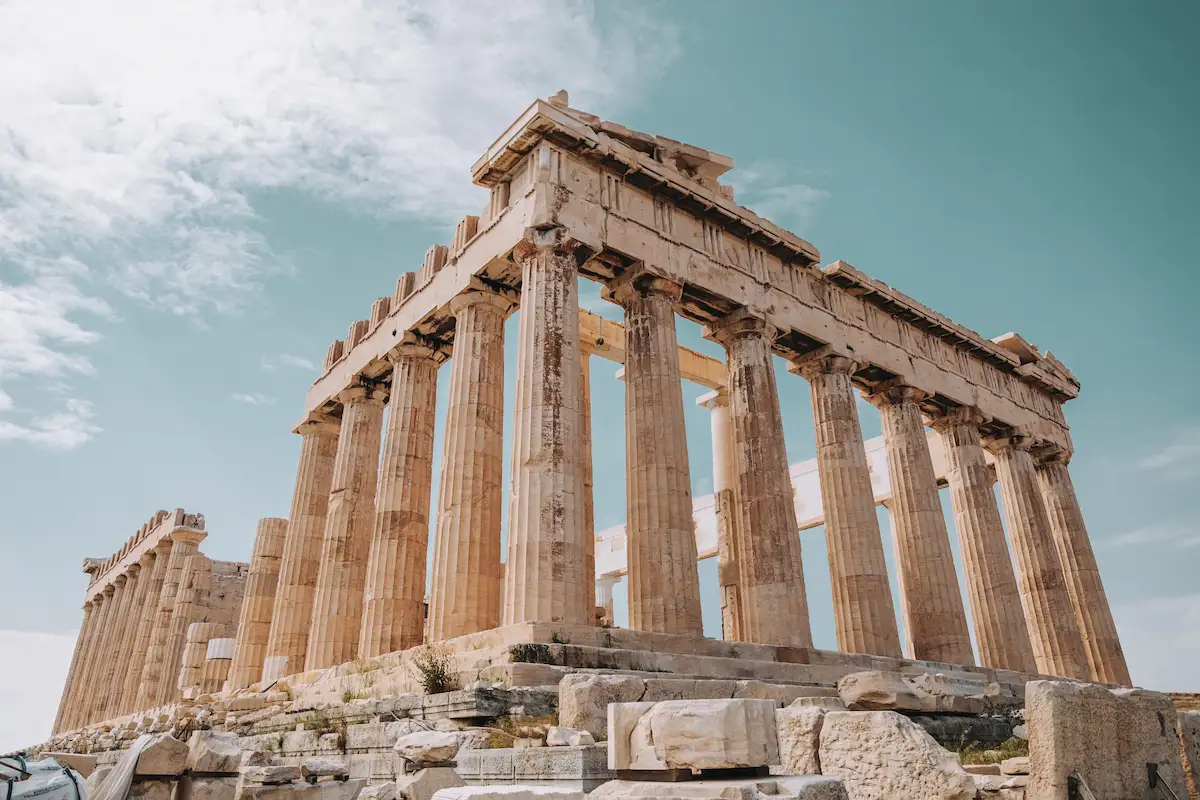Stoicism began in Greece around 300 BCE with Zeno of Citium. It evolved in Rome, influencing figures like Seneca, Epictetus, and Marcus Aurelius.
When diving into the vast universe of philosophy, it’s easy to be overwhelmed by esoteric terms and complex narratives. Yet, when it comes to the query, “How did Stoicism start?”, the answer is refreshingly straightforward, yet deeply profound. This age-old philosophy that has influenced everyone from Roman emperors to modern entrepreneurs is rooted in principles that are simple, but by no means simplistic.
A Glimpse into Ancient Greece
The birthplace of Stoicism is Greece, around 300 BCE. Picture an era when Socratic thought reigned and society was teeming with novel ideas. Amid this intellectual fervor, a merchant-turned-philosopher named Zeno of Citium started teaching in a painted porch, known in Greek as the “Stoa Poikile”. The followers of Zeno’s teachings were eventually called “Stoics”, thanks to the stoa or porch where they often met.
Stoicism then traveled from Greece to Rome, evolving and adapting as it crossed cultures and epochs. As it permeated Roman society, it became a guiding philosophy for many eminent figures such as Seneca, Epictetus, and the emperor Marcus Aurelius.
Stoicism’s Core Tenets
Stoicism can be distilled into a few foundational principles:
- Nature: Live in accordance with nature. This doesn’t just mean the physical world, but also the nature of humanity. Understand the universal order and your place within it.
- Logos: There’s a divine reason or logic that orders the universe. Recognizing and aligning oneself with this logic is essential.
- Control: Distinguish between what’s in your control and what’s not. Only concern yourself with the former. External events are indifferent; it’s our response to them that matters.
Why Stoicism Appeals Today
It’s one thing to chronicle how Stoicism started, but another to grasp why it remains relevant in our frenetic modern lives. Its longevity lies in its universal truths and practical advice.
In a world brimming with distractions, Stoicism reminds us to focus on the essence. It’s not about external validations or possessions, but rather inner peace and virtue. This is a perspective that contemporary thinkers, echoing voices like Ryan Holiday, have emphasized. The Stoic understanding that our responses shape our reality is both liberating and empowering. We might not control external events, but we can always control our reactions to them.
Moreover, in times of crisis or chaos, Stoicism offers a sturdy anchor. Remember Marcus Aurelius, a Roman emperor who governed at a time when Rome faced wars, plagues, and internal strife? He turned to Stoicism to find tranquility amid turmoil. His personal writings, collectively known as “Meditations”, are a testament to the enduring power of Stoic thought.
Stoicism in the Modern Era
Ryan Holiday, a modern ambassador of Stoicism, weaves these ancient principles into contemporary narratives. In a world of 24/7 news cycles and relentless digital noise, the Stoic practice of introspection, reflection, and focus becomes all the more crucial. It’s not about being devoid of emotions but mastering them.
Consider the challenges you face today. Perhaps it’s stress about work, uncertainty about the future, or interpersonal conflicts. By asking ourselves “What would a Stoic do?”, we can navigate these hurdles with a sense of clarity and purpose.
It’s impressive that a philosophy that began on a porch in Greece has rippled through millennia, continuously offering solace and guidance. The question “How did Stoicism start?” becomes not just a historical inquiry but a lens into human nature and resilience.
Conclusion
As we understand the origins of Stoicism, we’re not merely tracing a historical arc, but connecting with age-old wisdom that remains as potent today as it was in ancient Greece. So, the next time you find yourself amid chaos or confronting adversity, remember the Stoics. Remember the porch where it all began. By internalizing these teachings and applying them to our daily lives, we can find a centered, purposeful way of living, no matter the challenges that arise.
If you’re drawn to this philosophy, dive deeper. Engage with the writings of Seneca, Epictetus, or Marcus Aurelius. Or delve into modern interpretations like those of Ryan Holiday. As you do, the question “How did Stoicism start?” will evolve into a more personal one: “How can Stoicism start for me today?”
Wondering Where to Start Reading?
- “Meditations” by Marcus Aurelius
- The personal writings of the Roman Emperor offering profound insights into Stoic philosophy.
- “Discourses and Selected Writings” by Epictetus
- This compilation provides a comprehensive view of Epictetus’s Stoic philosophy. The discourses, preserved by his student Arrian, alongside the more concise “Enchiridion” or “Handbook,” offer practical guidance and profound philosophical insights.
- “Letters from a Stoic” by Seneca
- A collection of letters from Seneca to his friend Lucilius, providing insights into Stoic teachings on various aspects of life.
- “The Daily Stoic: 366 Meditations on Wisdom, Perseverance, and the Art of Living” by Ryan Holiday and Stephen Hanselman
- A day-to-day guide blending historical Stoic quotes with contemporary interpretation.
- “How to Be a Stoic: Using Ancient Philosophy to Live a Modern Life” by Massimo Pigliucci
- Pigliucci introduces Stoic philosophy as a means to navigate the challenges of the 21st century, drawing from his own journey of adopting Stoicism.






Leave a Reply